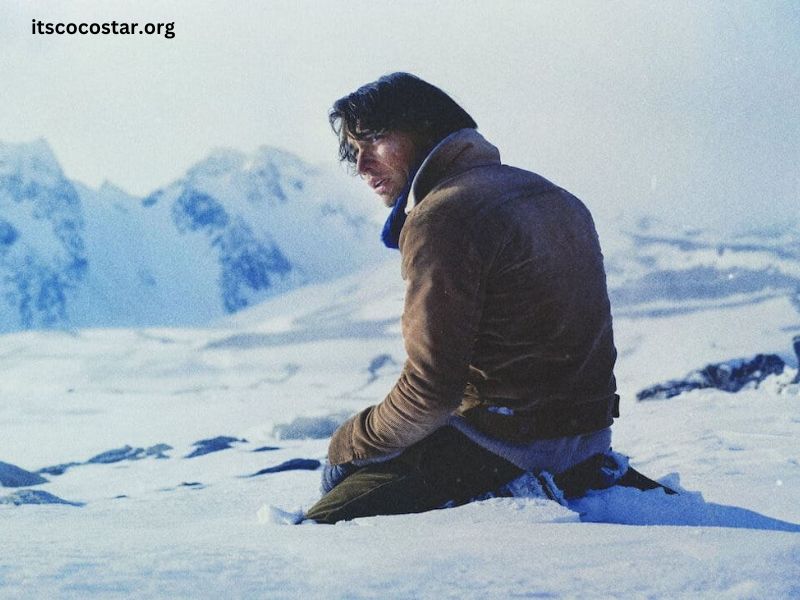The “Society of the Snow” is not just a captivating title; it evokes a chilling yet inspiring narrative of survival and resilience against nature’s unforgiving elements. This true story centers around the harrowing experiences of a Uruguayan rugby team, known as Old Christians Club, who found themselves stranded in the Andes after a plane crash in 1972. The images that emerged from this incident, both real and recreated, encapsulate the harrowing journey of survival and the indomitable human spirit.
The Background of the Tragedy
On October 13, 1972, a Fairchild FH-227D aircraft, carrying 45 passengers, including the Old Christians rugby team, took off from Montevideo, Uruguay, en route to Santiago, Chile. The flight faced numerous difficulties, including poor weather conditions and navigation errors. As they traversed the Andes Mountains, the plane encountered a violent storm, leading to its eventual crash on a remote snow-covered peak.
Of the 45 passengers, only 16 survived the initial crash. The survivors quickly realized the dire situation they faced. With no immediate rescue in sight, they were left to contend with harsh winter conditions, dwindling supplies, and the pressing challenge of survival.
The Struggle for Survival
The first few days after the crash were filled with shock and confusion. The survivors faced extreme cold, hunger, and isolation. They managed to salvage what they could from the wreckage, including food, clothing, and equipment. However, as days turned into weeks, the reality of their situation became painfully clear: they were trapped in a desolate, snowy landscape with no sign of rescue.
As starvation set in, the group faced an unimaginable moral dilemma. With no food and no prospects for help, they made the heart-wrenching decision to resort to cannibalism. The bodies of those who had perished in the crash became their only means of survival. This decision weighed heavily on the survivors, but they understood that their lives depended on it.
Real Pictures from the Tragedy
The true story of the Andes crash has been documented through various means, including photographs taken during the ordeal. While many of these images were taken in secrecy due to their sensitive nature, they serve as a powerful reminder of the harsh realities faced by the survivors.
Some of the most haunting photographs show the survivors huddled together, their faces etched with fear, cold, and despair. These images reveal the depth of human suffering, highlighting the psychological toll of their predicament. Despite the bleak circumstances, the photographs also capture moments of camaraderie and determination as the group banded together for survival.
The Rescue
After 72 days in the mountains, the survivors’ ordeal came to a dramatic conclusion. With hope dwindling, two of the survivors, Fernando Parrado and Roberto Canessa, made the brave decision to trek across the Andes to find help. Their journey was grueling, involving treacherous mountain passes and the constant threat of exposure to the elements.
After several days of navigating the harsh terrain, they finally encountered a Chilean shepherd, who alerted authorities. This led to a rescue operation, and on December 23, 1972, the remaining survivors were airlifted from the mountains. The images of their rescue, showing weary yet relieved faces, became iconic representations of human endurance and the will to survive.
The Aftermath and Cultural Impact
The story of the “Society of the Snow” has had a lasting impact on popular culture. It has been recounted in numerous books, documentaries, and films, most notably in the 1993 movie “Alive,” directed by Frank Marshall. These portrayals have brought attention to the incredible strength and resilience of the human spirit in the face of unimaginable adversity.
The survivors’ story has also sparked discussions about ethics and survival instincts. Their decision to resort to cannibalism raises profound questions about morality in extreme situations. The narratives surrounding their experiences challenge viewers and readers to confront uncomfortable truths about human nature.
Real vs. Recreated: The Power of Imagery
While the real pictures from the tragedy capture the raw emotions and stark realities of survival, recreations in film and media often aim to dramatize these events for storytelling purposes. The adaptation of the survivors’ story into a cinematic experience has allowed audiences to engage with the narrative on a deeper level, exploring themes of friendship, sacrifice, and the will to survive.
However, the balance between dramatization and authenticity remains a topic of debate. The real photographs convey the genuine pain and struggle faced by the survivors, reminding us of the true cost of survival. In contrast, the cinematic adaptations, while powerful in their own right, may not fully encapsulate the emotional and ethical complexities of the survivors’ experiences.
The Legacy of the Survivors
Today, many of the survivors have shared their stories, providing insights into their lives before, during, and after the crash. Their experiences have inspired countless individuals and have become a testament to human resilience. Some have dedicated their lives to sharing their story, speaking at conferences and events to impart lessons about survival, teamwork, and the importance of hope.
The journey of the Old Christians Club has become a symbol of endurance and has fostered a sense of community among those who have faced similar struggles. Their story continues to resonate with audiences, reminding us of the fragility of life and the strength found within the human spirit.
Conclusion
The “Society of the Snow” is a profound reminder of the extremes of human experience. The real pictures and stories from the Andes crash tell a tale of survival that transcends time and culture. They challenge us to reflect on our own values, ethics, and the lengths we might go to survive in the face of adversity.
As we remember the ordeal of the survivors, we celebrate their resilience and the power of hope. Their legacy serves as a poignant reminder that even in the darkest moments, the human spirit can prevail, illuminating the path forward through the harshest of winters.







